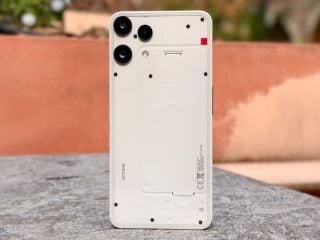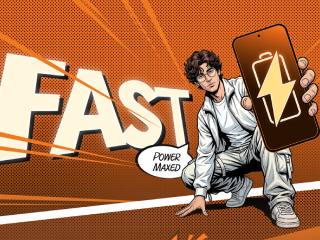- Home
- Mobiles
- Mobiles News
- New Smartphone Sensors Can Detect Identify and Measure Gases
New Smartphone Sensors Can Detect Identify and Measure Gases

In addition, sleep quality will be measurable with greater precision, using mobile health-care applications which gauge carbon dioxide quantities, researchers said. Many sensor developers are interested in using smartphones to measure gas concentrations.
"This is probably due to the spread of the Internet of Things (IoT), which enables indirect observations of a range of environmental factors based on data gathered from single sensors or sensor networks," said Anna Rissanen from VTT Technical Research Centre of Finland.
"Many day-to-day issues, such as precision and efficiency in the workplace, can depend on carbon dioxide levels and internal air quality," said Rissanen, leader of the research team. Using a mobile device to measure carbon dioxide will also enable new applications for smartphones: for example, sleep quality can be monitored by measuring the sleeper's exhalations.
The tiny gas sensor developed by team's senior scientist Rami Mannila is based on channelling light through the sample being analysed. Penetrability at various light wavelengths can be used to determine the composition of the compound. Carbon dioxide is identified based on its strong absorption of light at a wavelength of 4.2 micrometres.
In addition, a corresponding sensor technology can be used to simultaneously differentiate and detect other gases or substances based on the spectrum of their absorption peaks at various infra-red wavelengths, researchers said.
Get your daily dose of tech news, reviews, and insights, in under 80 characters on Gadgets 360 Turbo. Connect with fellow tech lovers on our Forum. Follow us on X, Facebook, WhatsApp, Threads and Google News for instant updates. Catch all the action on our YouTube channel.
Related Stories
- Samsung Galaxy Unpacked 2025
- ChatGPT
- Redmi Note 14 Pro+
- iPhone 16
- Apple Vision Pro
- Oneplus 12
- OnePlus Nord CE 3 Lite 5G
- iPhone 13
- Xiaomi 14 Pro
- Oppo Find N3
- Tecno Spark Go (2023)
- Realme V30
- Best Phones Under 25000
- Samsung Galaxy S24 Series
- Cryptocurrency
- iQoo 12
- Samsung Galaxy S24 Ultra
- Giottus
- Samsung Galaxy Z Flip 5
- Apple 'Scary Fast'
- Housefull 5
- GoPro Hero 12 Black Review
- Invincible Season 2
- JioGlass
- HD Ready TV
- Laptop Under 50000
- Smartwatch Under 10000
- Latest Mobile Phones
- Compare Phones
- Realme P4x 5G
- OnePlus Ace 6T
- OPPO A6x 5G
- Samsung Galaxy Z TriFold
- Poco F8 Ultra
- Poco F8 Pro
- Huawei Mate 80 RS Master Edition
- Huawei Mate 80 Pro Max
- Asus ProArt P16
- MacBook Pro 14-inch (M5, 2025)
- Poco Pad M1
- Poco Pad X1
- Just Corseca Skywatch Pro
- Honor Watch X5
- Acerpure Nitro Z Series 100-inch QLED TV
- Samsung 43 Inch LED Ultra HD (4K) Smart TV (UA43UE81AFULXL)
- Asus ROG Ally
- Nintendo Switch Lite
- Haier 1.6 Ton 5 Star Inverter Split AC (HSU19G-MZAID5BN-INV)
- Haier 1.6 Ton 5 Star Inverter Split AC (HSU19G-MZAIM5BN-INV)
















